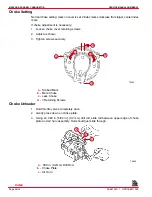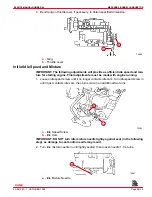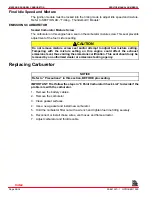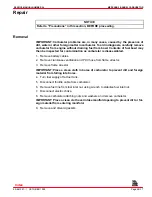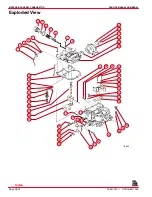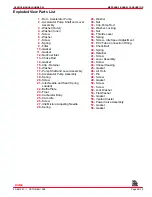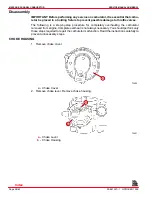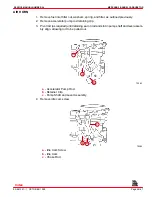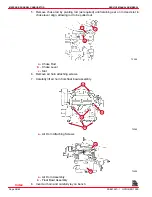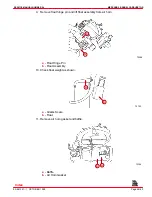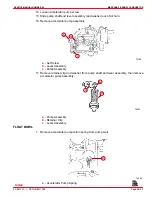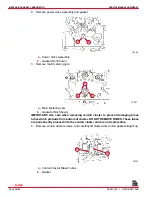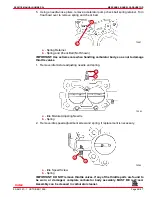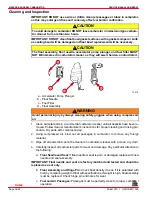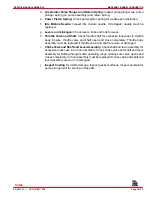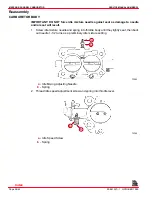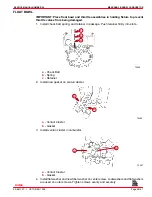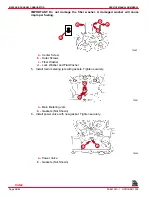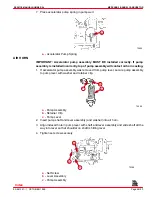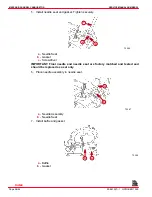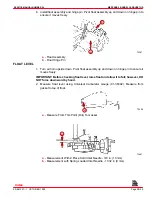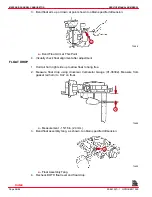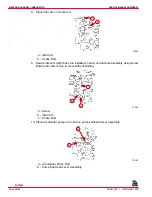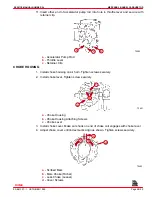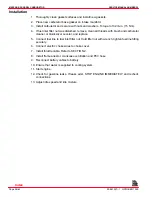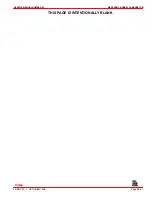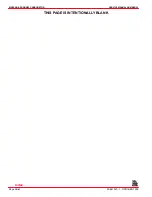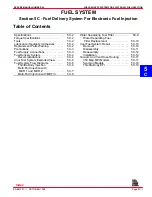
MERCARB 2 BARREL CARBURETOR
SERVICE MANUAL NUMBER 24
Page 5B-28
90-861327--1 OCTOBER 1999
Cleaning and Inspection
IMPORTANT: DO NOT use a wire or drill to clean jet passages or tubes in carburetor,
as this may enlarge orifices and seriously affect carburetor calibration.
CAUTION
To avoid damage to carburetor DO NOT leave carburetor in immersion type carbure-
tor cleaner for more than two hours.
IMPORTANT: DO NOT clean float bowl gasket surfaces with a gasket scraper or knife,
as sealing bead will be damaged and float bowl replacement will be necessary.
CAUTION
The float assembly, float needle, accelerator pump plunger, and fuel filter MUST
NOT BE immersed in carburetor cleaner, as they will swell, harden, and/or distort.
72410
a
b
c
d
a -
Accelerator Pump Plunger
b -
Float Needle
c -
Fuel Filter
d -
Float Assembly
WARNING
Avoid personal injury by always wearing safety goggles when using compressed
air.
1. Clean all metal parts in a commercial carburetor cleaner until all deposits have been re-
moved. Follow cleaner manufacturer’s instructions for proper cleaning and rinsing pro-
cedure. Dry parts with compressed air.
2. Using compressed air, blow out all passages in carburetor to remove any foreign
material.
3. Wipe off all parts that cannot be cleaned in carburetor cleaner with a clean, dry cloth.
4. Carefully inspect all carburetor parts for wear and damage. Pay particular attention to
the following:
a. Float Needle and Seat: If float needle or seat is worn or damaged, replace with new
needle and seat assembly.
IMPORTANT: Float needle and seat are factory matched and tested and should be
replaced as a set only.
b. Float Assembly and Hinge Pin: Check float density (to see if it is saturated with
fuel) by comparing weight of float with specifications. If weight is high, float assembly
must be replaced. Check hinge pin and holes for wear.
c. Fuel and Air Passages: Passages must be perfectly clean for proper carburetor
operation.
Index

